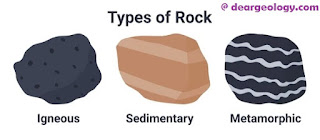ABSTRACT :
You are here because you wanna know something new, Different and important in GEOLOGY. If yes! you are in the right place.
In this article, you are gonna learn the most essential topic i.e “IGNEOUS ROCKS”, Its formation, History and everything related to it.
HINT:
Petrology is the branch of geology that deals with classification, formation, texture, and structure. Simply it’s all about the study of rocks.
DEFINITION:
When molten magma gets solidified in the earth’s crust Igneous rocks are formed.
ETYMOLOGY:
The word “IGNEOUS” is derived from the Latin word “IGNIS” which means “FIRE”.
INTRODUCTION :
Igneous rocks are very important and primary rocks of 3 main types of rocks. Igneous rocks are also called MAGMATIC ROCKS. Which occupies a large area of the earth’s crust. There are around 700 types of igneous rocks, having various properties.
As we all know igneous rocks are formed by the solidification of molten magma under the crust. When it reaches the earth’s surface due to the explosion of volcanoes. Magma under the earth's surface comes out as lava. There process from magma to lava, It gets crystallized at various temperatures and pressure. Due to further crystallization, it gets cools down gradually which results in igneous rocks. Igneous rocks are massive in content and are rich in minerals.
Let us have a detailed note of structure , Texture and classification following the history and uses of igneous rocks in this article.
MAGMA :
Magma is the root cause for the formation of igneous rocks. As said before igneous rocks are formed with both magma under the surface and lava on the surface.
Magma is a Greek word means “THICK OINTMENT”, magma is rich in minerals. The igneous rocks formed due to magma can be either by a volcanic eruption or by the midoceanic ridges. Igneous rocks are formed by partial melting from the existing rocks. It is a mixture of various minerals.
When a volcanic eruption occurs the magma coming out of it becomes lava on the surface generally volcanic eruption occurs when there is an increase in temperature, decrease in pressure, and change in the composition under the surface.
Based on their mode of formation igneous rocks are divided into 2 kinds of rocks. They are :
i) EXTRUSIVE ROCKS
ii) INTRUSIVE ROCKS
i) EXTRUSIVE IGNEOUS ROCKS :
- Extrusive igneous rocks are also called volcanic rocks.
- Extrusive igneous rocks are formed when lava cools and get solidify on the surface of the earth.
- These rocks cool quickly as it forms at the surface.
- Their crystals are small due to rapid cooling.
- They are fine-grained or glassy.
- The lava on the surface cools within a few weeks.
- Rocks are formed on the surface as lava cools down.
- Can view through a microscope, it is aphenitic.
- Commonly known rock: BASALT.
- Examples of extrusive igneous rocks: obsidian, pumice, rhyolite, etc…
ii) INTRUSIVE IGNEOUS ROCKS :
- Intrusive igneous rocks also called plutonic rocks.
- Intrusive igneous rocks are formed when magma gets cooled and solidifies under the surface of the earth.
- These rocks take a long time to cool as they formed under the surface.
- Their crystals are large due to slow cooling.
- They are coarse-grained.
- The magma in the crust takes a few years to cool down.
- Rocks are formed under the surface taking a long time.
- Can view through the naked eye, It is phenertic.
- Commonly known rock: GRANITE.
- Examples of intrusive igneous rocks: diorite, pegmatite, gabbro, etc…
THERE IS ANOTHER TYPE OF IGNEOUS ROCK IN BETWEEN THE TWO MAIN TYPES OF ROCKS. IT IS :
iii) HYPABYSSAL :
- Hypobyssal is the third type of igneous rock which is also known as subvolcanic rocks.
- Often forms at shallow depth in between 2km below the volcano.
- It shows an intermediate texture of intrusive and extrusive igneous rocks.
- It is derived from dykes and sills. It is rarer than the other two types of igneous rocks.
- It shows mixed characteristics of volcanic and plutonic rocks.
- This type of rock is generally identified in the continental boundaries and the oceanic crusts.
- Commonly known rock: ANDESITE.
- Examples of hypabyssal igneous rocks: dolerite, microgranite, micro diorite.
ROCK CYCLE :
The Rock cycle is all about the formation, destruction, and reformation of rocks.
- Rock cycle is otherwise known as “GEOLOGICAL CYCLE”
- As we all know there is 3 main type of rocks, i.e igneous rocks, sedimentary rocks, and metamorphic rocks.
- Any type of rock can transform into any other type of rock at its equilibrium conditions of temperature and pressure.
- There is 3 main type of process that leads to the formation of various kinds of rocks among those 3 type.
- They are crystallization, erosion and sedimentation, metamorphism.
- Many types of rocks are formed in between the 3 main types at their favorable conditions.
- Igneous rocks are formed with the cooling of magma or lava.
- Sedimentary rocks are formed by the erosion and deposition.
- metamorphic rocks are formed within the crust with a combination of igneous and sedimentary rocks.
- This is a cycle process..
CONTINUE READING ...
FOLLOW US ON INSTAGRAM @DEARGEOLOGY






